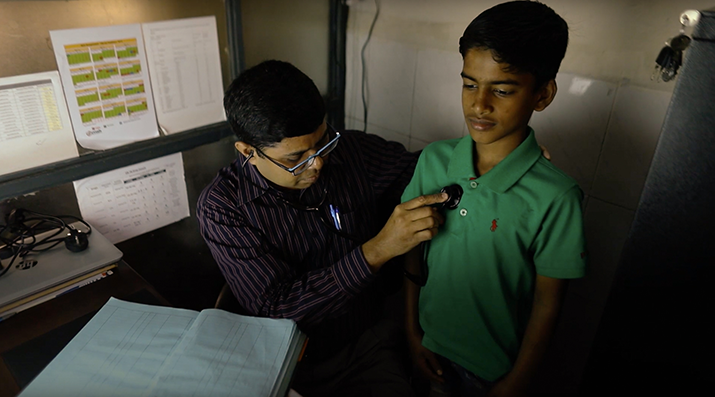Sabbir’s Story: Regular and Effective Treatment for Pediatric Drug-Resistant TB
Sabbir’s Story: Regular and Effective Treatment for Pediatric Drug-Resistant TB

It is a common story in Bangladesh: Alarming symptoms, an initial misdiagnosis, inappropriate drugs, continuous pain and suffering…until, if he or she is lucky, the patient finally sees a specialist and is diagnosed and treated for TB. Unfortunately, this sequence of events is more common for children than adults. Because pediatric TB can mimic other diseases and patients can present without a cough, pediatric TB has developed a reputation of being rare and difficult to detect. However, global evidence suggests that about 10% of TB patients are under the age of 15. With some guidance, pediatricians can easily screen patients for TB and work with health providers, communities, and families to save young lives.
Training pediatricians in is an important part of the USAID-funded Challenge TB (CTB) program in Bangladesh. CTB provides technical assistance nationwide to the National TB Control Program and more focused support, including pediatrician training for diagnosis and early treatment of childhood TB, in two of the country’s eight divisions.
Young Sabbir is one of many children who has benefitted from this support. When he fell ill at age nine, Sabbir’s parents took him to a pharmacy. It was fortunate that after the pills failed to work, the pharmacist referred him to a doctor with experience in pediatric TB. The doctor then referred the boy to a nearby directly observed therapy (DOT) center that provided regular treatment.
After three months of DOT, Sabbir tested positive again. The National Institute of Diseases of the Chest and Hospital (NIDCH) in Dhaka, which receives support from CTB, performed high-tech testing and found that he had drug-resistant TB (DR-TB).
By that point, Sabbir weighed only 42 pounds, and NIDCH staff feared he might not survive the 240 injections of toxic TB drugs in his treatment regimen. Fortunately, after three months in the hospital, Sabbir finally tested negative, he felt better, and he started putting on weight. Despite some side effects, Sabbir was allowed to continue his treatment at home under community-based DR-TB management that was provided by CTB-trained teams.
Sabbir was declared cured in March 2016 after 19 months on drug therapy.
“He is now leading a healthy life and is back at school. We are now so happy,” said Sabbir’s father. “During the treatment, we were counseled about the disease and proper management of it. We will be sure to take him for recommended follow-up visits during the next two years.”